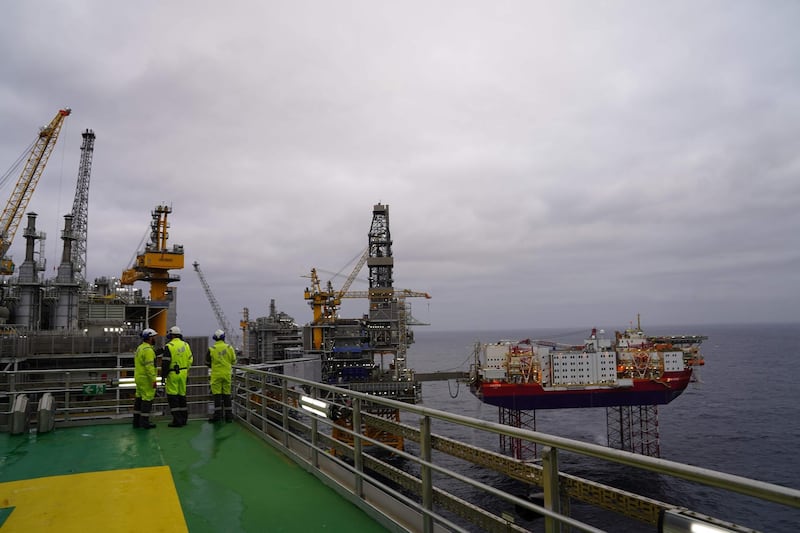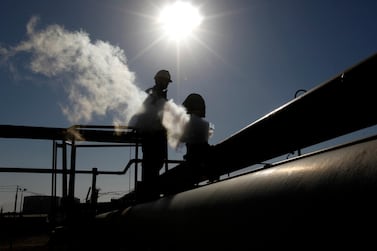“The chances of finding oil on the continental shelf off the Norwegian coast can be discounted,” wrote Norway’s geological survey in 1958. Nevertheless, companies tried, and from 1966 to mid-1969, they drilled 32 dry wells. On the verge of giving up, Phillips Petroleum decided to try one more well, as they’d already paid for a rig.
In December that year, they found Ekofisk, still producing today and one of the largest fields ever found in the country, kicking off a petroleum boom that goes on today. Fifty years of Norway as an oil nation is a remarkable landmark, but intended to be just halfway, with another half-century of life intended for the newest big field, Johan Sverdrup, which started production last October.
The country has used its oil and gas resources wisely. Iraqi geologist Farouk Al Kasim, who had come to Norway in 1968, inspired the creation of an independent regulator and a national oil company, Statoil. He encouraged the development of technical expertise, environmental protection, and maximising the amount of hydrocarbons recovered. After the fall of Saddam Hussein, he drafted a Norwegian-style oil law for Iraq, but the country’s government never adopted it.
Another crucial move was to set up an independently managed
fund for Norway’s surplus oil revenues, stabilising the economy and avoiding over-dependence on petrodollars. The government can only spend the fund’s earnings, not its capital.
As of Friday, the fund was worth $1.156 trillion (Dh4.2tn), as reported on the continuously updated counter on its website. This will pay for the pensions of 5.4 million Norwegians even after petroleum earnings decline or stop.
Yet the country’s oil sector faces two challenges as it enters its second half-century: maturity, and the environment. New fields include not just Johan Sverdrup, but also Johan Castberg in the Barents Sea in Norway’s Arctic north, and others. But its Petroleum Directorate estimates that almost half the resources have been produced, and without major new finds, oil output will drop after the mid-2020s.
Companies have drilled a string of dry wells in the Barents, including in the much-awaited eastern area formerly disputed with Russia, and estimated sizes of existing discoveries have been scaled down. The promising area off the scenic Lofoten Islands in the north-west is likely to remain closed to exploration permanently because of perceived threats to the environment, tourism and fishing.
A record number of fields are producing in the country, but traditional hunting grounds in the North Sea are increasingly mature, and less attractive to the supermajors. Chevron exited the country in 2018, Total scaled back in 2017, Shell has divested most of its holdings, and ExxonMobil agreed to sell its assets in September to Vår Energi. In their place have come smaller firms, often backed by private-equity, and joint ventures. Vår itself is a merger of a private equity group with Italian major Eni’s Norwegian subsidiary, while BP formed a joint entity with local engineering company Aker.
Meanwhile Statoil became Equinor in 2018, to signal its new role in energy beyond just petroleum. It operates around the world, with major assets in the US, Angola, Brazil and elsewhere. Yet as operator of the two Johans, major new gas field Aasta Hansteen, and seven out of the last nine new fields in the country, it has become ever more domestically dominant.
There is growing unease in the country at the disconnect between its environmental aspirations and its hydrocarbon production. Its hydropower-dominated electricity generation is almost zero-carbon and nearly sixty percent of new car sales are electric, the highest share in the world. The savings fund has come under popular pressure to divest from fossil fuels, though for now it has only excluded pure upstream oil firms.
Yet it is also the world’s third-biggest exporter of gas and twelfth-biggest exporter of oil. Its greenhouse gas emissions per person are quite high – greater than those of Germany, the UK or China. Indeed, its petroleum wealth and high standard of living gives it the luxury of pro-environmental policies such as heavy subsidies for battery cars.
So how does Norway square this circle? Reducing its own oil industry’s carbon footprint is one part – it is connecting offshore platforms to the electrical grid, so they do not have to burn gas and diesel.
It is one of the pioneers of carbon capture and storage (CCS), encouraged by a carbon tax introduced as far back as 1991. CCS stalled in the 2000s, but now Norway’s Northern Lights project plans to be the world’s first cross-border carbon capture project. It will take carbon dioxide from a cement plant and waste-to-energy plant near Oslo, ship it to Bergen on the west coast and then send it by pipeline to be injected deep under the sea-bed near the giant Troll gas field. Future projects could also send carbon dioxide to the same point.
And Equinor is using its expertise in marine engineering to lead the development of offshore wind. It has partnered with Masdar to build wind farms off the east coast of England, and the Hywind project, the world’s first floating wind farm, in Scotland. Floating turbines can be installed in deep waters far from land, where winds are stronger and more predictable.
Norway continues to make full use of the financial, human, technological and physical assets created over fifty years of oil output. Several of its innovations have become standard practice for oil-exporting states. Now, like its peers, it needs to map a climate-compatible path to 2070 and beyond.
Robin M. Mills is CEO of Qamar Energy, and author of The Myth of the Oil Crisis







